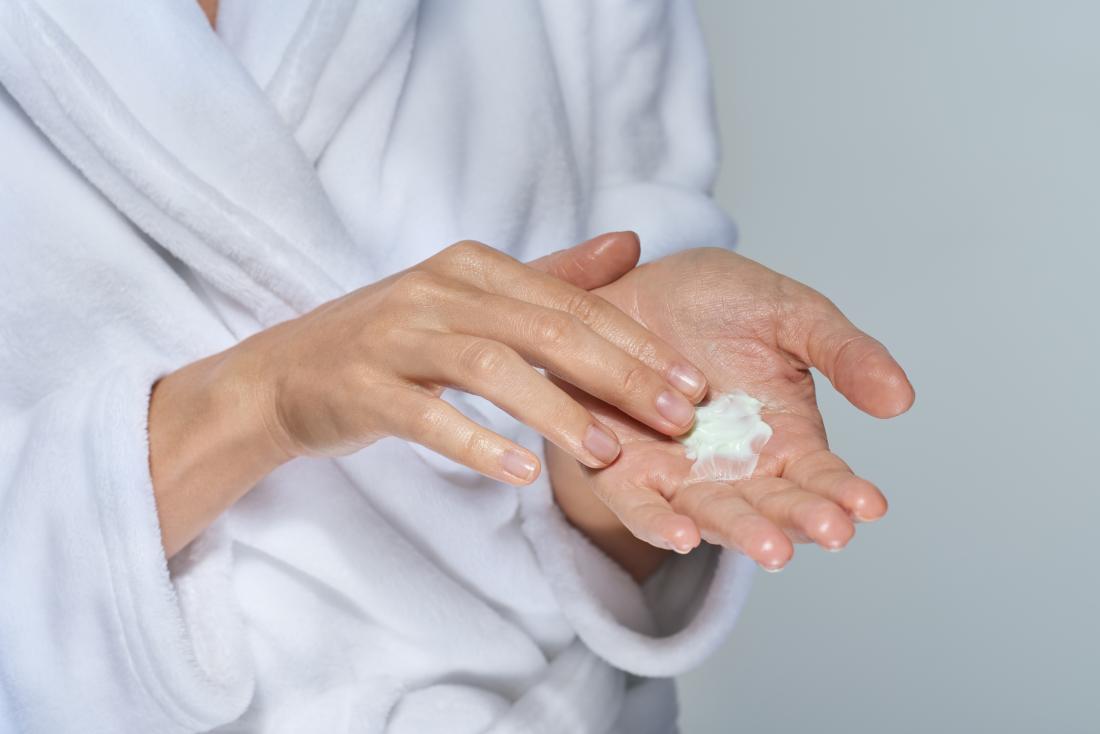A lactation consultant or doctor who is knowledgeable about breastfeeding can help, but home treatments are often effective.
In this article, learn about the causes of itchy nipples while breastfeeding, as well as how to get relief. We also cover when to see a doctor.
Causes
Itchiness while breastfeeding may be in the nipples or the breasts. The itch might feel as if it is on the skin or deep in the breasts.
Some common causes of itchy nipples while breastfeeding include:
Cracked, irritated skin

Breastfeeding can result in dry and irritated skin, as the nipple tissue may be sensitive at first.
Women who are new to breastfeeding may be surprised by how forcefully a newborn can suck. The nipple tissue may be sensitive at first, so forceful sucking can cause dry and irritated skin, especially in people with a history of skin problems.
Women with a history of eczema may develop eczema on their nipples due to the irritation of nursing.
When nipple itching is due to cracked or dry skin, the symptoms will probably be on the surface of the skin. Symptoms typically improve as the breastfeeding pair settles into a comfortable rhythm.
Sometimes, however, bacteria enter the breast tissue through tiny cracks in the skin, causing an infection, such as mastitis.
Mastitis
Mastitis is inflammation and pain in the deep breast tissue, usually caused by bacteria. It can appear suddenly, often in the early weeks of breastfeeding.
Mastitis can cause itching and pain both on the skin and deep in the breast tissue. Some women experience painful shooting sensations. The breasts may feel warm to the touch. Mastitis can also cause a high fever.
A doctor can prescribe antibiotics for mastitis. Very rarely, an untreated infection can spread or even become life-threatening.
Thrush
Thrush is a yeast infection in the nipple or breast. It is very common in breastfeeding women and can cause itching and pain on the nipples, as well as deep in the breasts.
It can be difficult to locate the source of the pain, and it may change or get worse with time. Thrush thrives in warm, wet environments, such as a baby’s mouth. A woman and baby can pass thrush back and forth for weeks or even months.
A doctor will often prescribe treatment for both the woman and baby to help prevent thrush from recurring.
Contact dermatitis
Contact dermatitis is pain and itching that occurs after exposure to a skin irritant. Some women develop contact dermatitis in the nipples in the early weeks of breastfeeding as their bodies adjust to frequent contact with a baby’s mouth. Sometimes, certain creams that some women use to help with breastfeeding may also cause contact dermatitis.
When someone has contact dermatitis, the itching will only occur on the part of the nipple that is in contact with the baby’s mouth or another irritant. Sometimes the nipples turn red or scaly.
Let-down reflex
The let-down reflex helps milk flow out of the nipple. Suckling, hearing a baby cry, or even thinking about the baby can trigger the let-down reflex.
Some women also experience this reflex when a feed is overdue, or if they have an excessive supply of breast milk.
Every woman will experience the let-down reflex differently, but sometimes it causes short-lived itching in the nipples or breasts. Itching that lasts several minutes or hours is probably not due to the let-down reflex.
Bad latch and poor positioning
Breastfeeding is a skill that takes time for both a woman and a baby to master. When the baby latches onto the breast incorrectly or is in a position that puts unnecessary pressure on the nipple, it can irritate or damage the nipple.
Itching due to a bad latch or poor positioning often happens in the early weeks of breastfeeding. Typically, it goes away on its own as the pair learns how to breastfeed comfortably.
If there is no improvement, a doctor or midwife may refer a woman to a lactation consultant who can help with positioning and address any other issues.
Diagnosis
A doctor, midwife, or lactation expert can usually diagnose the cause of itchy nipples based on a woman’s symptoms. Examining the baby can also help, since thrush in the baby usually means the mother has thrush, too.
They may also ask to watch the baby breastfeed. This can provide important details about whether the breastfeeding position is irritating the nipples.
Treatment and home remedies

Creams containing antifungal, antibacterial, and anti-inflammatory ingredients may also help soothe pain.
When breast pain is not due to an infection, a woman can often treat it at home. The following strategies to help with itchy, painful nipples:
- Using an all-purpose nipple ointment (APNO). These prescription creams contain antifungal, antibacterial, and anti-inflammatory ingredients that can help with several causes of nipple pain.
- Using a lanolin cream. A 2012 study found that women who used lanolin to manage nipple pain were more likely to still be breastfeeding at 12 months, unlike those who used APNO.
- Changing breastfeeding positions. A shallow latch can damage and irritate the nipples. A lactation consultant can help with positioning.
- Applying heat to the breasts. This can help soothe irritation and inflammation.
- Drying the nipples after each breastfeeding session. This can help prevent cracking and infection.
If a doctor diagnoses an infection, they may prescribe:
- antifungal creams or medication for thrush
- antibiotics for mastitis
When to see a doctor

See a doctor if the breasts start to swell after breastfeeding.
It can be tricky to know what is normal and what is not when breastfeeding for the first time.
While most women can try home remedies for a few days, it is best to see a doctor if symptoms do not improve or get worse.
A breastfeeding woman should speak to a doctor if they experience:
- itchy nipples and red, swollen breasts
- a fever along with breast pain or itching
- intense itching that feels as if it is deep in the breasts
- a baby with a white tongue or mouth
- a painful lump in the breast, which could be a sign of an abscess
Takeaway
Itchy nipples are most common during the initial weeks of breastfeeding but can happen at any point. Breastfeeding is not supposed to hurt, and women do not have to suffer to breastfeed a baby.
While it is relatively common to experience some discomfort in the early weeks, this should not be unbearable. Any discomfort should go away over time.
A local La Leche League, a lactation consultant, and a knowledgeable doctor can help a person find strategies to make breastfeeding comfortable and relaxed.

